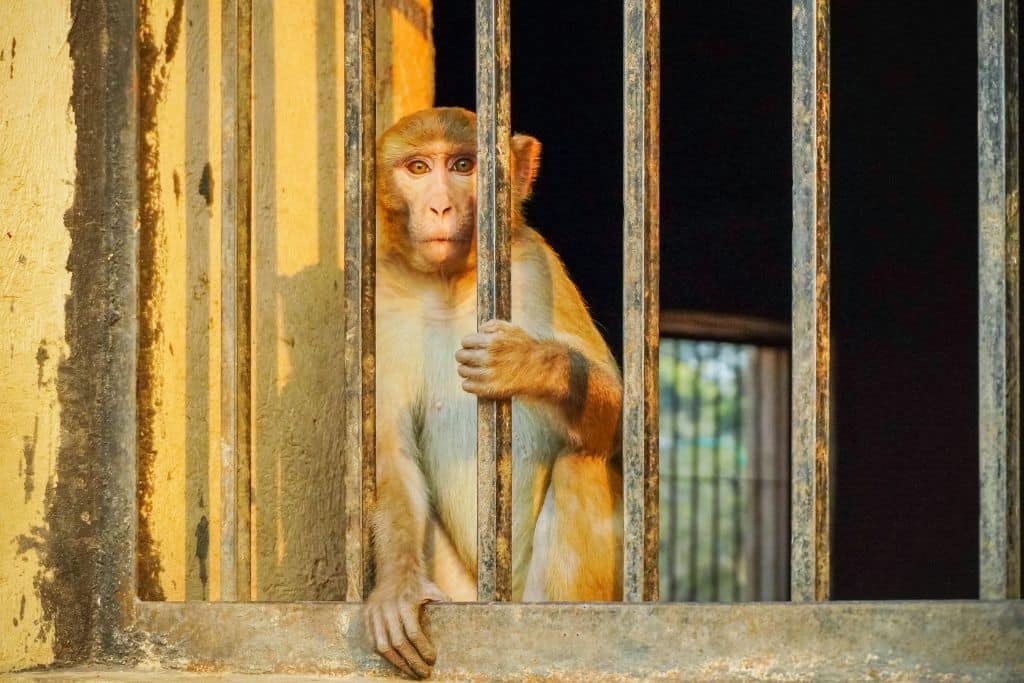
When we protect animals, we also protect ourselves and the planet.
—
By Tricia Croasdell and Heather Brown
Last month, history was made. The World Health Organisation (WHO) adopted a Pandemic Agreement to strengthen global cooperation to prevent, prepare for, and respond to future pandemics.
While many headlines have focused on how this new agreement will help protect human health during the next inevitable crisis, few have mentioned its role in protecting animals and ecosystems.
The Covid-19 pandemic was a brutal wake-up call. It showed us the profound, global consequences of emerging infectious diseases – most of which originate in animals. Covid-19, Ebola, Zika, HIV, avian influenza, and many other devastating diseases all grew into global health threats at the human-animal-environment interface. These diseases pass between animals and humans as a consequence of wildlife exploitation, natural habitats encroachment, and reckless livestock farming practices.
Quite simply, if we want to prevent future pandemics, we must address these root causes. The Pandemic Agreement gives us a chance to do exactly that.

One of the most important aspects of the agreement is its inclusion of One Health – a recognition that human, animal, and environmental health are interconnected. This marks the first time that countries have acknowledged its importance in an international, legally-binding agreement, meaning they will be held accountable in a different, more meaningful way.
As climate change and biodiversity loss accelerate, ignoring this interconnection is no longer an option.
Human activities do not just damage ecosystems – they create the perfect storm for viruses to jump from animals to humans. The more humans encroach on natural habitats, trade wildlife, and intensify livestock farming, the more we tip the balance, fuelling that storm and increasing the chances of new pandemics.
Animal Protection Is Pandemic Prevention
The science is clear. Reports from the United Nations Environment Programme and the Intergovernmental Science-Policy Platform on Biodiversity and Ecosystem Services have identified wildlife trade, land use change and intensive animal farming as primary pandemic drivers. But it does not have to be this way. By addressing these root causes we can lower the risk of pandemics before they begin.
Better treatment of animals is both ethical and a practical part of pandemic prevention. Healthy animals help regulate disease. But animals in poor environments, on poor diets, or in other stressful conditions are more susceptible to illness. These poor conditions weaken an animal’s immune system and allow diseases to emerge, mutate, and spread.
Commercial wildlife trade poses additional public health risks, including poor hygiene due to the high concentration of animals and regular animal-human contact associated with the practices. High-density, low-welfare livestock operations are also vulnerable to outbreaks, and, to make things worse, they often rely heavily on antibiotics – fuelling another global health threat: antimicrobial resistance (AMR).
More on the topic: The Environmental Impact of Antimicrobial Resistance
The Pandemic Agreement rightly calls for action to address drivers at the human-animal-environment interface, reducing risks associated with human-animal interactions, and for prudent use of antimicrobials in relevant sectors.
A Safer Future for All Living Things
For too long now, pandemic response has focused on reacting to outbreaks rather than preventing them. But real prevention starts upstream – by changing how we interact with animals and ecosystems.
How we treat animals and interact with our environment is something we can absolutely control. Poor animal welfare practices increase pandemic risks, but this means that the opposite is also true – improving our interactions with animals lowers those risks. If we cannot fully prevent the next crisis, we can at least delay it and reduce its impacts.
We have an opportunity here. The Pandemic Agreement offers us a chance to rethink our relationship with the natural world. This means halting habitat destruction and promoting ecosystem restoration. It means ending high-risk commercial wildlife trade. It means transitioning to more humane, sustainable farming practices. And it means investing in the health and welfare of animals – not just because it benefits humans but because animals are sentient beings who deserve protection in their own right.
Pandemic preparedness is ultimately about unity, recognizing that no one is safe until everyone is safe. That safety must extend beyond humans to include animals. Our survival is linked with theirs.

The recent spread of highly pathogenic avian influenza A(H5N1) into species like dairy cows, mink, cats, dogs, and sea lions has raised alarm bells among scientists. The more a virus jumps between species, the greater the risk it could adapt to humans. Millions of animals have already been affected, impacting human health, well-being, and livelihoods. It’s a stark reminder that pandemics don’t begin in hospitals. They begin in forests, on farms, and in markets.
To be truly effective, we must consider the role of animals not just as disease hosts, but as sentient beings and partners in prevention. Ultimately, pandemic prevention is about changing how we live, farm and interact with the planet.
We have a rare opportunity to reshape how the world prepares for health threats and put into action the deeper truth: when we protect animals, we also protect ourselves and the planet. Let’s not waste it.
—
About the authors: Tricia Croasdell is CEO at the World Animal Protection. Heather Brown is External Affairs Manager at the World Animal Protection.
This story is funded by readers like you
Our non-profit newsroom provides climate coverage free of charge and advertising. Your one-off or monthly donations play a crucial role in supporting our operations, expanding our reach, and maintaining our editorial independence.
About EO | Mission Statement | Impact & Reach | Write for us







